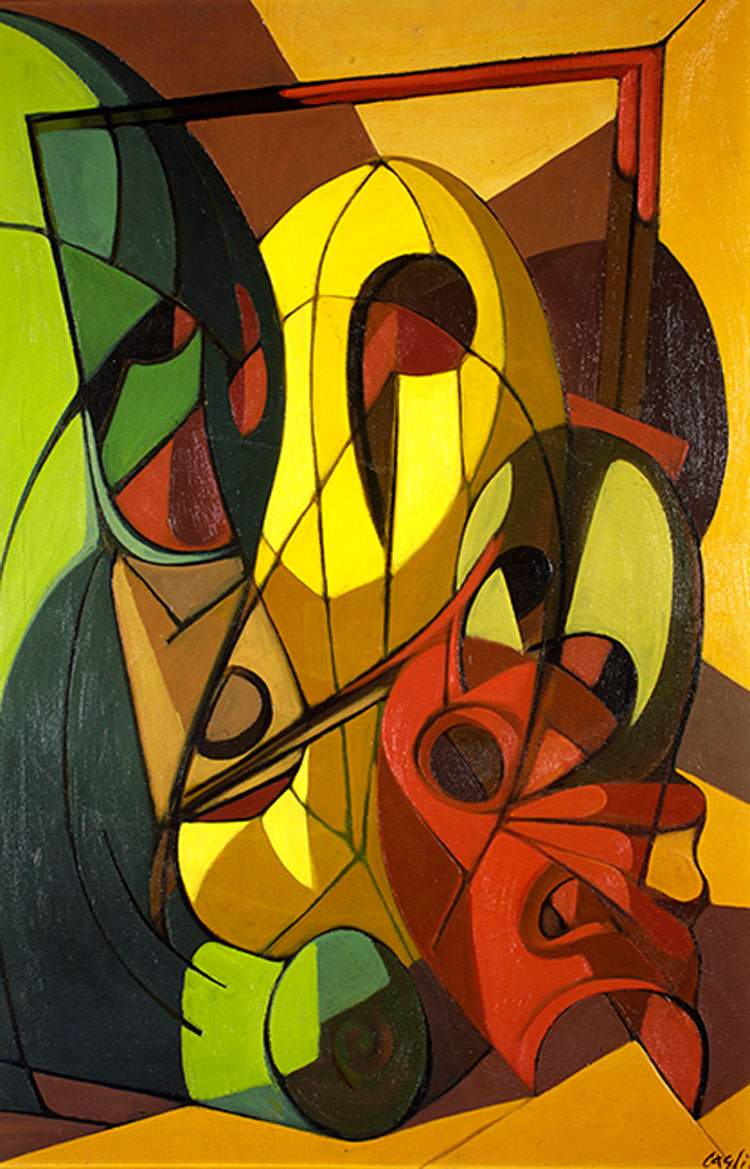The Palazzo Cipolla Museum in Rome presents from November 8, 2019 to January 6, 2020 the anthological exhibition Corrado Cagli. Folgorazioni e Mutazioni dedicated to the artistic activity of Corrado Cagli.
Curated by Bruno Corà in collaboration with theCagli Archive, promoted by the Fondazione Terzo Pilastro - Internazionale and organized by Poema S.p.A. with the support of Comediarting, the exhibition will display a wide selection of paintings and a corpus of drawings, sculptures, sketches and theatrical costumes, tapestries and graphics from important institutions and prestigious private collections. About two hundred works that aim to reconstruct the vast artistic production of one of the major protagonists of the Italian and international artistic debate of the 20th century.
The major pictorial cycles created by the artist will be on display: from the early youthful works in majolica to those made in oil or other techniques from the period of the Roman School (1928 - 1938), from the neo-metaphysical proofs (1946 - 1947) elaborated in New York to the studies on the Fourth Dimension (1949), to the Cellular Motifs (1949), the Direct and Indirect Imprints (1950), the ethereal Metamorphoses (1957 - 1968), the Orphic Variations (1957), the evocative and enigmatic Carte series (1958 - 1963) and finally concluding with the Modular Mutations developed until the mid-1970s.
“Today Cagli’s art demands new reflections, a new debate on the language and aesthetic thought of this undisputed Master of the 20th Century must be opened. This exhibition moment will allow to investigate and affirm, with the new critical tools available, the topicality of Cagli’s lesson, whose protean action never ceases to amaze and to exert stimuli to artists calling today to decline the ways of his incessant research and his highest outcomes,” said curator Bruno Corà.
“Already in the 1930s Cagli was a leading figure in Italian art and represented the country in prestigious international exhibitions: by many he was seen as a privileged exponent of an Italian way to modernity, an alternative to Futurism on the one hand and to traditional twentieth-century art on the other.Later, the precarious condition and nomadic lifestyle of his American exile period led him to produce art with what essayist Raffaele Bedarida called ”stylistic schizophrenia,“ something that made the works of that time very ”significant on a personal level and beyond.“ Moreover, a key characteristic of Cagli is certainly his continuous effort toward contamination, seeking collaborations outside the boundaries of a single discipline: not only with literati but also with musicians, architects, mathematicians and more. In this sense, he is a strongly and incredibly contemporary artist, and it is important, in my opinion, to remember and re-propose today his incessant, varied and never trivial expressive research,” added the President of Fondazione Terzo Pilastro - Internazionale.
Along the exhibition itinerary, some of the iconic moments of Cagli’s painting will be tackled, such as those aimed at giving an identity to Italian muralism in the search for “a cyclic and polyphonic art”; for the occasion, some of the panels of the cycle exhibited and partly censored at the 1937 Universal Exhibition in Paris will be brought together. Also present will be some of the works exhibited in the exhibition of his return to Italy, after his American exile, at the Palma Art Studio in 1947, which provoked a backlash from the artists of the Forma group. Finally, in addition to the tapestries, plastic works, architectural sketches for the Zodiac Fountain in Terni and those for the Göttingen Monument in Germany, the exhibition will feature the monumental cartoon of the wall painting executed for the XXI Venice Biennale in 1938, Orpheus Enchants the Beasts, and a section devoted to his activity as a theatrical set and costume designer, particularly his New York experience with the Ballet Society together with George Balanchine.
Image: Corrado Cagli, Teatro tragico (1947; oil on canvas, 92 x 61 cm; Rome, Private Collection)
 |
| Rome dedicates an anthological exhibition to Corrado Cagli, among the major protagonists of the 20th century |
Warning: the translation into English of the original Italian article was created using automatic tools. We undertake to review all articles, but we do not guarantee the total absence of inaccuracies in the translation due to the program. You can find the original by clicking on the ITA button. If you find any mistake,please contact us.